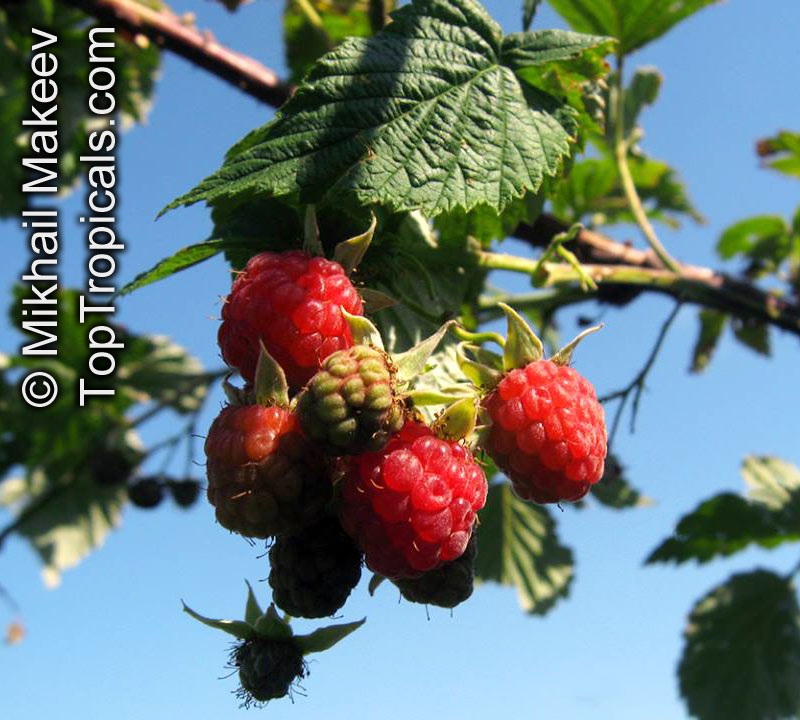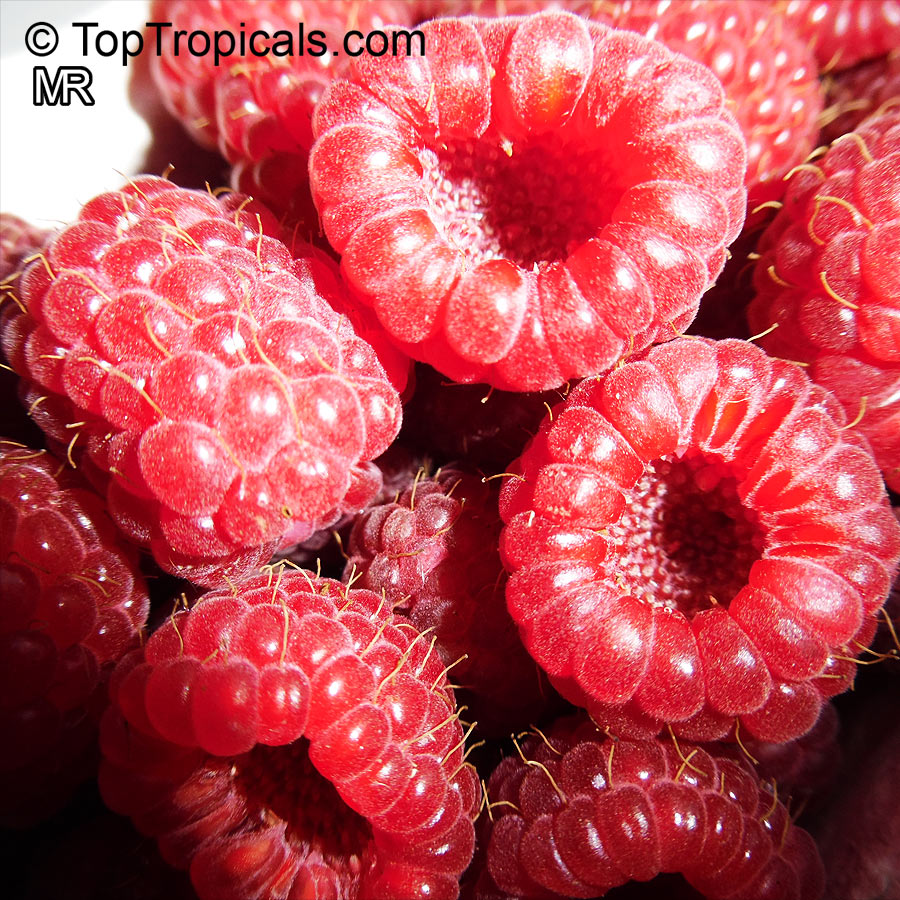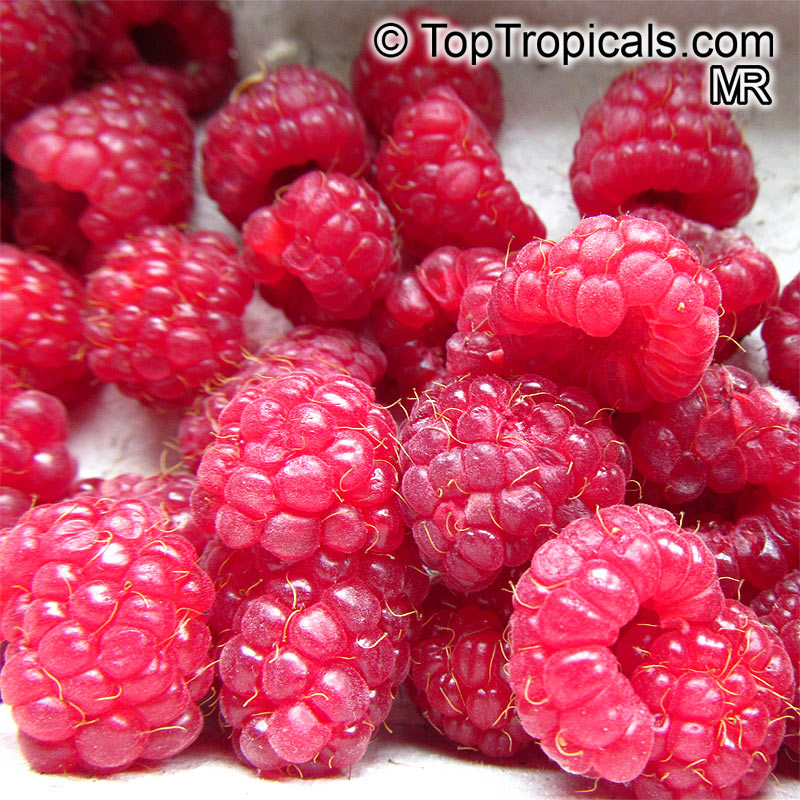Rubus idaeus (Tropical Raspberry)
Top Tropicals Plant Encyclopedia
Botanical name: Rubus idaeus
Common names: Tropical Raspberry, Heritage Red Raspberry
Family: Rosaceae












Rubus idaeus, commonly known as Tropical Raspberry, is a large shrub that can reach up to 5-10 feet tall. It is a deciduous plant and grows best in full sun but can tolerate semi-shade. It requires regular watering and is a great option for those looking to attract butterflies and hummingbirds to their garden.
This attractive shrub is known for its abundance of pink, white, and off-white flowers that bloom from late April to June, and its sweet and aromatic raspberries that ripen in mid-summer to fall. Its raspberries are dark red with a mild flavor, making them perfect for fresh eating, freezing, jams and jellies. The raspberries are usually thorny, however, some varieties are thornless.
Apart from its beauty, Tropical Raspberry is also known for its ethnomedical uses and medicinal properties. The fruit is high in vitamins and minerals, including Vitamin A, Vitamin B, Vitamin C, and Vitamin E, and may be used for calming coughs, colds and sore throats. It is also known for being a good source of dietary fiber, calcium, and iron. It can produce countless fruits in one season and is a great crop for gardens with cooler climates.
To ensure optimal fruit production, it is important that this shrub is fertilized when blooms begin, and that all fruited canes are cut down to ground level at the end of the season. With proper care, this plant can give your garden a beautiful and bountiful harvest year after year.
Similar plants: Rubus idaeus (Tropical Raspberry)
- Rubus caesius (Blackberry)
- Rubus fruticosus (Blackberry)
- Rubus illecebrosus (Balloon Berry)
- Rubus laciniatus (Cutleaf Evergreen Blackberry)
- Rubus niveus (Mysore Raspberry)
- Rubus odoratus (Purple-flowering Raspberry)
- Rubus sanctus (Holy Bramble)
- Rubus sp. (Raspberrie)
- Rubus sp. (Brazos Blackberry)
- Rubus ulmifolius (Elmleaf Blackberry)


